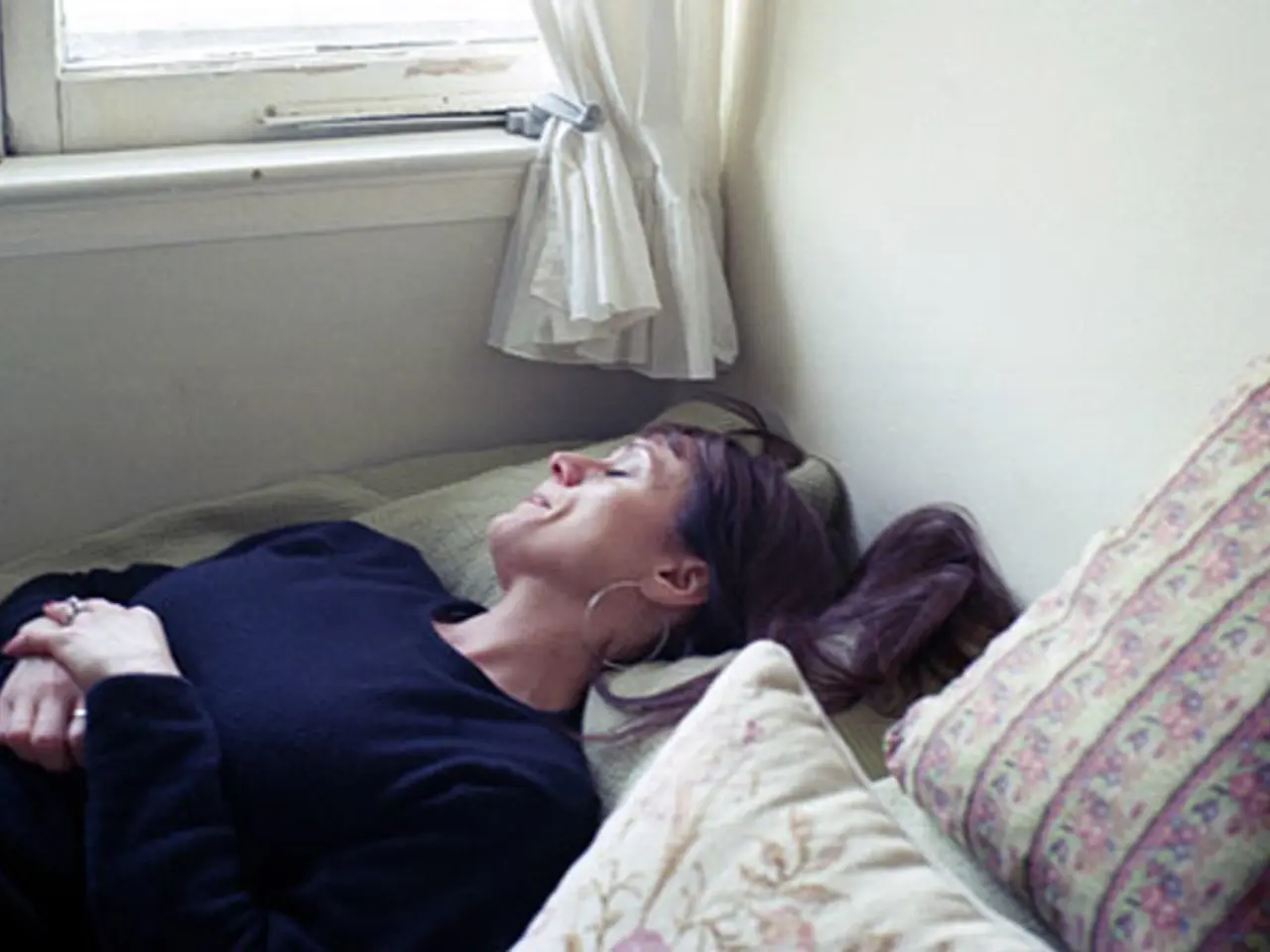Unusual Sleep Disorders Affect Many: An Overview of Parasomnias
Unusual nighttime behaviors: Understanding causes, categories, indications, and beyond
Parasomnias, a group of sleep disorders characterized by abnormal physical events or behaviors during sleep, are more common than one might think. These disruptive conditions, which can include sleepwalking, night terrors, and sleep-related eating, can affect both children and adults, with different common causes, symptoms, and treatments depending on the age group.
Causes of Parasomnias in Children
In children, parasomnias often stem from an immature nervous system development, leading to disorders of arousal. Genetic predisposition also plays a role, as some parasomnias tend to run in families. Sleep fragmentation due to underlying sleep disorders such as obstructive sleep apnea (OSA) or periodic limb movement disorder can trigger parasomnias. Behavioral factors like inconsistent bedtime routines and anxiety may contribute. Fortunately, parasomnias in children frequently diminish by adolescence.
Causes of Parasomnias in Adults
Adults may develop or continue parasomnias due to stress, anxiety, or psychiatric disorders. Sleep deprivation or irregular sleep schedules can provoke episodes. Associated with other sleep disorders such as OSA or restless legs syndrome, the use of certain medications or substances like alcohol and sedatives can also trigger parasomnias. Some parasomnias may be chronic or related to neurological conditions.
Common Types & Symptoms of Parasomnias
| Parasomnia Type | Common Symptoms | Typical Age Group | |---------------------------|-------------------------------------------------------|------------------------| | Sleepwalking | Walking or performing activities while asleep, no memory of events | Children and adults | | Night Terrors | Screaming, thrashing, confusion, difficulty waking, no recall after episode | Mostly children | | Sleep-related Eating | Eating or drinking during sleep without awareness | Adults mainly | | Bedwetting (Enuresis) | Involuntary urination during sleep | Mostly children | | Restless Legs Syndrome | Urge to move legs, tingling sensations interfering with sleep | Both adults and children | | Confusional Arousals | Waking confused and disoriented | More common in children |
Symptoms can include vivid behaviors (walking, talking, eating) during sleep, difficulty waking, confusion on awakening, daytime fatigue, and being told about activities afterward that the person does not remember.
Treatments for Parasomnias
Treatment for parasomnias involves addressing triggers, improving sleep hygiene, and, when necessary, medical or behavioral intervention. Maintaining a regular sleep schedule and practicing good sleep hygiene are general approaches. Addressing underlying sleep disorders such as treating obstructive sleep apnea or restless legs syndrome may reduce parasomnia episodes. Avoiding sleep deprivation and minimizing stress are also important.
In children, no treatment is often necessary as parasomnias tend to resolve by adolescence. Behavioral interventions such as sleep coaching to improve bedtime routines, creating a safe sleeping environment due to risk of injury, and medical treatment only if episodes are frequent or dangerous are common approaches.
In adults, treatment typically targets underlying factors, including managing stress, psychiatric conditions, or discontinuing triggering medications. Medications such as benzodiazepines or antidepressants may be prescribed cautiously in severe cases. Cognitive behavioral therapy (CBT) can be useful for anxiety-related parasomnias. In case of nocturnal eating, treatment may include behavioral strategies or pharmacotherapy.
Summary
Parasomnias are disruptive sleep disorders marked by unusual behaviors during sleep, often arising from a combination of genetic, neurological, and environmental factors. In children, parasomnias like night terrors and sleepwalking are common and usually self-limiting. Adults may develop or continue parasomnias due to stress, sleep deprivation, or other medical conditions. Treatment involves addressing triggers, improving sleep hygiene, and, when necessary, medical or behavioral intervention. While parasomnias often improve over time in children, persistent or severe cases in any age group should be evaluated by a sleep specialist to rule out underlying disorders and guide appropriate treatment.
- In children, parasomnias often stem from an immature nervous system development and genetic predisposition, with sleep fragmentation due to underlying sleep disorders like obstructive sleep apnea (OSA) or periodic limb movement disorder also being factors.
- Adults may develop or continue parasomnias due to factors such as stress, anxiety, psychiatric disorders, sleep deprivation, irregular sleep schedules, or the use of certain medications or substances like alcohol and sedatives.
- Night terrors in children are characterized by screaming, thrashing, confusion, difficulty waking, and no recall after the episode, while sleepwalking in both children and adults involves walking or performing activities while asleep with no memory of events.
- Treatment for parasomnias in children often consists of no treatment as they tend to resolve by adolescence, but behavioral interventions such as sleep coaching, creating a safe sleeping environment, and medical treatment if episodes are frequent or dangerous may also be used.
- In adults, treatment for parasomnias involves managing stress, psychiatric conditions, or discontinuing triggering medications, and may include medications such as benzodiazepines or antidepressants in severe cases, as well as cognitive behavioral therapy (CBT) for anxiety-related parasomnias.




